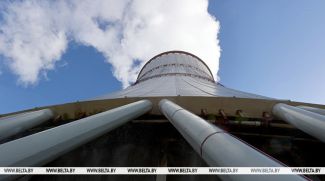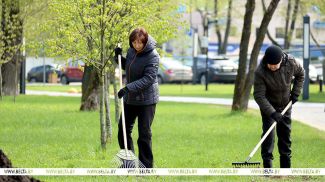MINSK, 14 April (BelTA) - Mobile sources account for more than 80% of emissions of air pollutants in Minsk, but in general, the air in the Belarusian capital is cleaner than in the capital cities of the neighboring countries, Chairman of the Minsk City Committee for Natural Resources and Environmental Protection Stepan Dubnitsky told a press conference on 14 April, BelTA has learned.
The Belarusian capital has been recently showing a tendency of compliance with the maximum permissible emissions into the atmospheric air by the consumers of natural resources. This positive trend continues. “If we consider motor transport, the biggest load is experienced by the central part of the city and major transport highways. The main contribution to air pollution is made by mobile sources, which account for more than 80% of the total emissions into the atmosphere. This figure stood at the level of 130,100 tonnes in 2019. According to preliminary estimates, the reduction in 2020 will be 12.5%, or 16,300 tonnes,” said Stepan Dubnitsky.
He attributes the reduction of emissions to the renewal of car fleet, improvement of motor fuel quality, road traffic optimization, an increased use of bicycles, more frequent use of public transport instead of personal transport. Stepan Dubnitsky added that electric transport accounts for about 40% of the total urban transport. This percentage should be increased, he believes.
Large industrial enterprises of the Belarusian capital, of course, have a negative impact on the environment, “but in recent years there have been no significant emissions of pollutants into the air”, said the head of the committee. Gross total emissions for 2020 were 134,400 tonnes, down 14,300 tonnes from 2019. Stationary sources reduce emissions primarily thanks to the modernization of production facilities. “To date, all asphalt plants in Minsk have modern gas cleaning equipment, which lets us ensure the solids concentration output at not more than 100 mg per 1 cubic meter,” added Stepan Dubnitsky.
The greatest anthropogenic load is exposed to the river Svisloch downstream of the city after the release of aeration by the Minsk wastewater treatment plant. To minimize this damage, Minskvodokanal Company is implementing a project to reconstruct treatment facilities. The completion date of the project is planned for 2025. Pre-project and design works are underway. In general, even now the water quality by hydrochemical indicators is good or excellent there (except for the section of the river, located near the village of Korolishchevichi, where the Svisloch has a satisfactory hydrochemical status).
The above data was also confirmed by Elena Bogodyazh, head of the environmental information service of the National Center for Hydrometeorology, Radioactive Pollution Control and Environmental Monitoring. In terms of official statistics of observations, she noted that in major European cities such as Milan, Barcelona, and others, where a full lockdown was introduced, the content of nitrogen oxides decreased for this period, but there was no reduction in the volume of solid emissions. Minsk, for obvious reasons, shows no connection between the COVID-19 pandemic and the reduction of emissions.











